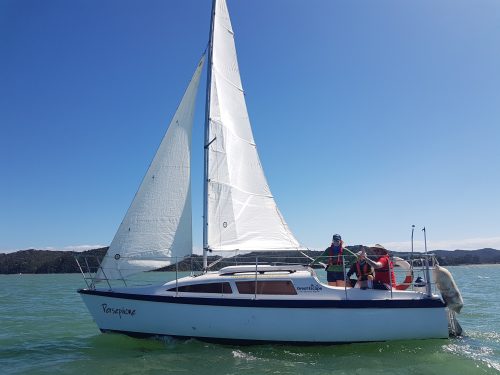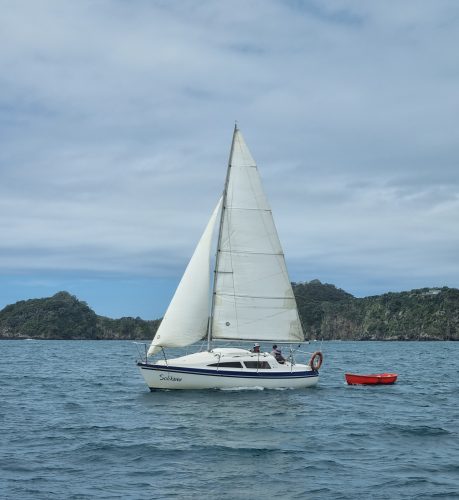“Pull the halyard, ease the sheet, get up to the windward side.”
There are very good reasons that every part of the boat and each rope or line on a boat has a unique name. It’s important for safely and your enjoyment that you get familiar with some basic sailing terminology.
Whilst not extensive here’s a handy guide to get you started:
 Boat Parts and Components
Boat Parts and Components
- Hull: The main body of the boat that floats on the water.
- Deck: The flat surface of the boat where you stand and move.
- Cockpit: The area of the deck where the skipper and crew control the boat.
- Mast: The tall vertical spar that holds the sails.
- Boom: The horizontal spar connected to the bottom of the mast that holds the bottom of the mainsail.
- Rudder: A movable fin located underwater at the back of the boat that controls its direction.
- Tiller: The lever connected to the rudder used to steer the boat.
- Keel: A weighted fin beneath the hull that provides stability and prevents the boat from tipping over.
Sails and Rigging
- Sail: The fabric panels that catch the wind to propel the boat forward.
- Mainsail: The largest sail attached to the mast and boom.
- Jib: A smaller triangular sail at the front of the boat.
- Headsail: A collective term for jibs and other sails at the bow.
- Halyard: A rope used to raise and lower sails.
- Sheet: A rope used to control the angle of the sail relative to the wind.
- Boom Vang: A line that controls the vertical position of the boom.
- Clew: The lower corner of a sail.
- Luff: The leading edge of a sail.
- Leach: The trailing edge of a sail.
 Wind and Points of Sail:
Wind and Points of Sail:
- Windward: The side of the boat facing into the wind.
- Leeward: The side of the boat facing away from the wind.
- Close Hauled: Sailing as close to the wind as possible.
- Beam Reach: Sailing at a right angle to the wind.
- Broad Reach: Sailing with the wind coming over the side of the boat.
- Running: Sailing downwind with the wind at the back.
- Tacking: Changing direction by turning the bow of the boat through the wind.
- Gybing: Changing direction by turning the stern of the boat through the wind.
Nautical Directions and Manoeuvres:
- Port: The left side of the boat when facing forward.
- Starboard: The right side of the boat when facing forward.
- Bow: The front of the boat.
- Stern: The back of the boat.
- Aft: Toward the stern.
- Forward: Toward the bow.
- Tacking/Coming About: Initiating a tack.
- Bear Away: Turning away from the wind.
- Luffing: When a sail flutters due to poor trim or trying to sail head to wind.
Remember, learning to sail takes practice and patience. Start with smaller boats and gradually build your skills as you become more comfortable with the terminology and techniques. Once you get to grips with this “sailing lingo”, you’ll be able to confidently join any crew and eventually cast off by yourself.
We look forward to having you come to sail with us.





